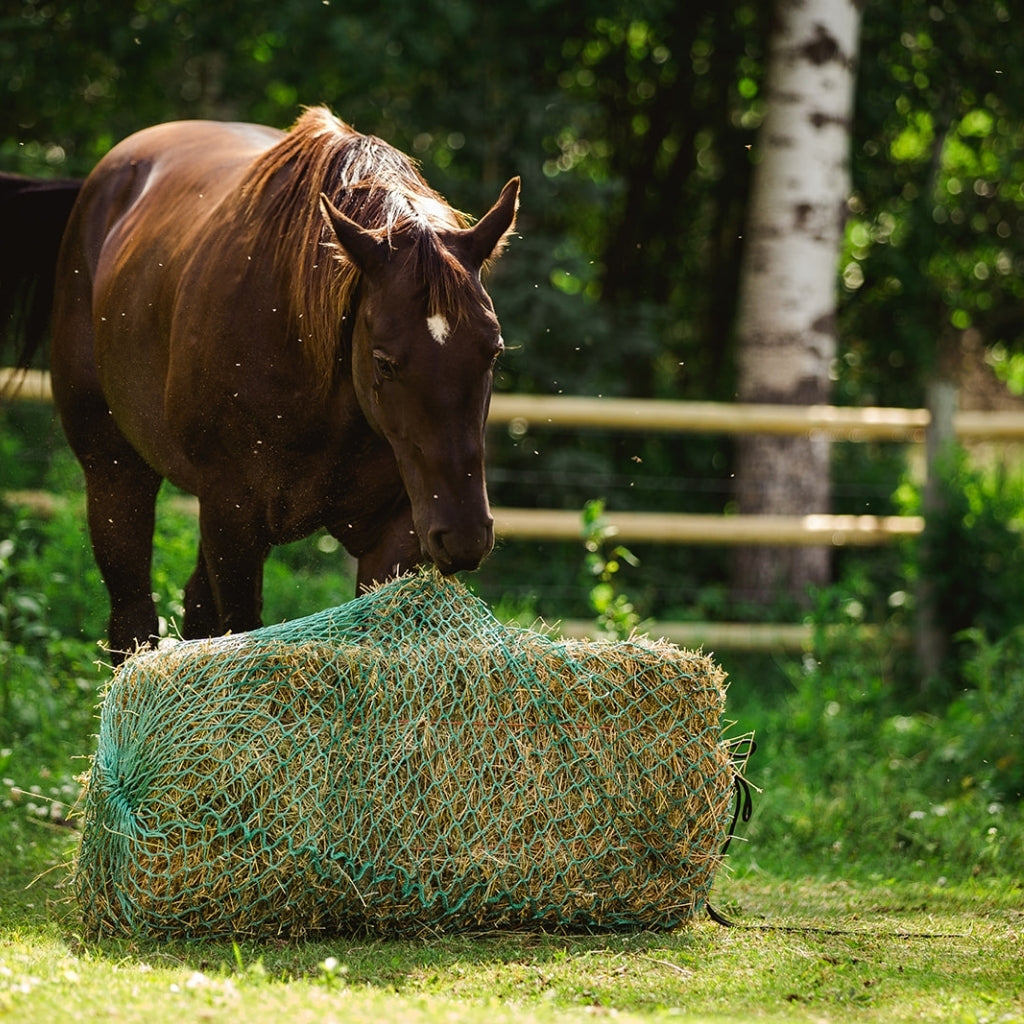Our Net Material
Triple-braided, knotless, nylon blend nets crafted with animals in mind!
Discover the superior quality of Nag Bags, meticulously designed with safety and durability in mind. These exceptional hay nets are knitted from a premium blend of nylon fibers, ensuring reliability and longevity. Proudly made in Canada, Nag Bags strictly adhere to the highest Canadian textile standards.
Following these key tips help to enhance the durability and efficiency of your hay nets. Many customers have seen their Nag Bags last long and stay useful even after 5+ years of regular use.
Clean Out Old Hay:
Extend the lifespan of your nets by regularly removing old hay. Over time, decomposing hay can generate heat, potentially damaging the nets. Keep your nets fresh by clearing out any accumulated hay.
Regular washing:
Ensure the longevity of your hay nets by periodically washing them throughout the year. Avoid using chlorinated water or soap, as these may cause damage. For detailed instructions, refer to our provided washing tips below.
Shield from the Elements:
Like any product, constant exposure to heat, rain, and snow can accelerate deterioration. To ensure optimal longevity, provide undercover protection for your nets whenever possible. Rest assured, our nets meet stringent Canadian standards and come with built-in UV protection.
Proper Storage:
Avoid leaving the nets on the ground outside or in a barn to prevent damage from mice. Instead, securely hang or store them away when not in use.
How to
Gentle Cleaning Solution:
What you'll need:
- Non-chlorine water
- Vinegar
- Baking Soda
For the most effective outcomes, we suggest washing your NAG Bags by immersing them in a combination of 3 gallons of cold rain or well water, 1/4 cup vinegar, and 1/2 cup baking soda. It is recommended to allow the nets to soak in this solution for around an hour. Following that, thoroughly rinse the nets with fresh water and hang them up to dry in an area away from direct sunlight.
Washing Heavy Soiling Hay Nets:
If your hay nets are heavily soiled, add our specially formulated Nag Wash, an organic soap that helps eliminate odour, also excellent for shampooing animals. Avoid chlorine water or harsh soap, as it may make nets harden and stiff.
Cleaning Large Round or Square Bales:
To clean large round or square bales hay nets, fill a horse water tub with non-chlorinated water and add 1.5 cups of vinegar and 1 cup of baking soda. Alternatively, you can hang the net on a fence and rinse it off with a hose. Soaking the hay net in water with baking soda is the most effective way to soften it.
If your nets have become stiff, there are several possible reasons for this issue:
Avoid Chlorinated Water:
- Stiffness may result from washing the nets in chlorinated water. To restore flexibility, ensure that you only wash your nets in non-chlorinated water, following the above washing tips.
Combat Heavy Soiling:
- Excessive dirt and grime can damage the net fibers, leading to stiffness. To address this, thoroughly wash the net using the recommended cleaning and softening instructions provided earlier.
Consider Hay Quality:
- Stiffness can also be influenced by the type of hay used. If the hay is fertilized, conditioned, or has a high sugar content, it can alter the pH level of a horse's saliva, potentially causing the net to stiffen, similar to exposure to chlorinated water. We recommend conducting further research on the hay, such as Hay Testing, to gain more insights.
Mind the Climate and Sunlight:
- Nets exposed to hot, dry climates or harsh sunlight may exhibit stiffness. To minimize this issue, it is advisable always to place the nets in covered or shaded areas, ensuring protection from direct sunlight.




